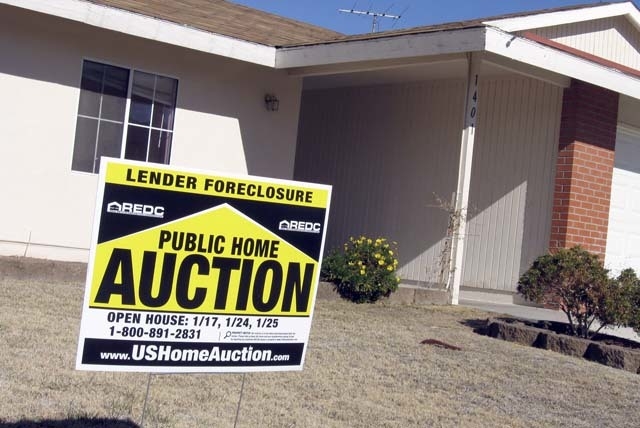Notices of default spiked in days before Homeowners Bill of Rights kicked in

Talk about deadline pressure.
Banks, title companies and processors used September’s waning days to mount a record-setting foreclosure push before a Homeowners Bill of Rights took effect Tuesday.
Companies submitted more than 440 local notices of default on Friday alone — four times the number they filed in all of June and nearly the number they filed in July, according to both data-crunching website LVDEFAULT.com and analysis firm Home Builders Research.
They set a one-day high on Monday for Clark County filings, at 934 notices, said Tony Martin, director of LVDEFAULT.com. In the last two days of September, filings roughly equaled notices from June, July and August combined.
Official figures won’t be in until mid-October, but early stats show roughly 3,700 notices of default, which start the foreclosure process, in September. That is the highest number since September 2011, the month before a state law imposed new legal liabilities on banks that foreclosed.
September’s filings were quite a jolt to a system that was running just 50 notices a day earlier this year, Martin said.
But it wasn’t an unexpected jolt. Analysts, including Dennis Smith of Home Builders Research, predicted a spike in filings as the Homeowner’s Bill of Rights prepared to take effect Tuesday.
The law puts new limits on banks, including mandates to give homeowners 30 days’ notice before starting foreclosure and to tell owners about alternatives to default. The law also requires banks to assign a single contact person to a homeowner in default. Nor can banks dual-track, or try to foreclose while working out a short sale. And they have to meet timelines for requesting additional paperwork and answering modification requests.
So it’s no surprise notices of default soared just before Tuesday, said Bill Uffelman, president and CEO of the Nevada Bankers Association. He called the numbers “right in the neighborhood” of what he expected, as banks tried to get in under the wire with as many notices as they could muster.
It’s not the first — or even the second — time foreclosure filings changed as new laws kicked in.
Banks filed 3,685 notices of default in September 2011. Notices plunged to 52 the next month, when new legislation required the person signing default papers to have personal knowledge of who owns the promissory note, a tough task when many mortgages were bundled and sold as financial derivatives multiple times. Notices of default bounced back to 1,486 by May, but in June, a law that loosened the personal-knowledge requirement took effect, and notices crashed again, to 116. They crept up to 1,149 in August before rocketing to roughly 3,700 in September.
The latest numbers beg the question, though: If banks could file nearly 1,500 notices in the last two days of September, why couldn’t they hit that stride in June, when those legal requirements relaxed?
Some of it had to do with “spoon-feeding” foreclosures onto the market to prop up prices, Martin said.
Agreed Smith: “Obviously, they were dragging (defaults) out. The longer they drag them out, the higher the price they can get when they sell them. They also don’t have to report the loss until they sell the house. September’s numbers do show lenders can process more (notices of default) than they have been.”
Uffelman responded that it’s impossible to go full-force on foreclosures when the law keeps tweaking the rules of the game, even if those new rules are supposed to help banks.
“Every time the law changes, the legal department has to sign off on it, the compliance department has to sign off on it, the training department has to sign off on it,” he said. “Suddenly, you’ve consumed five work weeks just getting ready to do something. Someone has to go through files and make sure they’re in compliance with the rules.”
Martin and Smith agreed that regardless of pricing or market concerns, it has been difficult for banks to navigate ever-changing laws. New regulations haven’t helped Southern Nevada deal with its shadow inventory — the tens of thousands of homes languishing in vacancy or foreclosure, waiting to hit the market. And the longer it takes to chew through that supply, the more dragged-out the local housing market’s recovery will be, Smith said.
The first two days of October already show another nosedive for notices of default.
Martin tracked 25 filings on Tuesday, and seven on Wednesday. He said he doesn’t expect filings to go above 150 in the month.
Without legislative intervention, banks probably would have been filing at least 1,500 notices a month, Martin said. Smith took it a step further, saying filings would have continued at 3,500 or so a month if that 2011 law had never taken effect.
That would have put the market considerably ahead of where it is today in working down its shadow inventory.
And now?
“It’s still going to be many, many years before the system is flushed,” Smith said.
Contact reporter Jennifer Robison at jrobison@reviewjournal.com. Follow @J_Robison1 on Twitter.